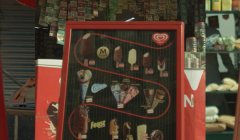
Wall’s solar panel price board keeps shopkeepers' stock from melting
The environmentally conscious campaign from Lola Mullenlowe makes use of a Solar Price Board to support local shopkeepers and provide consumers with ice cream
Are we over-thinking the thinking?


Ever wondered what makes the difference between brand success and brand failure? Hard work? Creative genius? Luck? A combination of all three is a good start. As is the brand’s ability to speak to the subconscious as powerfully as it convinces the conscious, the ‘thinking’ parts of our brain.
Neuroscience has taught us that most decision-making is automatic and intuitive, made in System 1 - the ‘rapid response’ part of our brain. After that, we rationalise our decisions in System 2 – the logical section of the brain.
To create a successful brand marketers and designers need to connect with both the instinctive System 1, whose dominant language is visual (around 90%), as well as making sense to System 2.
Coley Porter Bell has developed a number of Rules of Thumb to help create brand design and experiences that will appeal to both parts of the brain.
Key take outs:
To find out more contact Vicky Bullen at Coley Porter Bell
Looks like you need to create a Creativebrief account to perform this action.
Create account Sign inLooks like you need to create a Creativebrief account to perform this action.
Create account Sign in